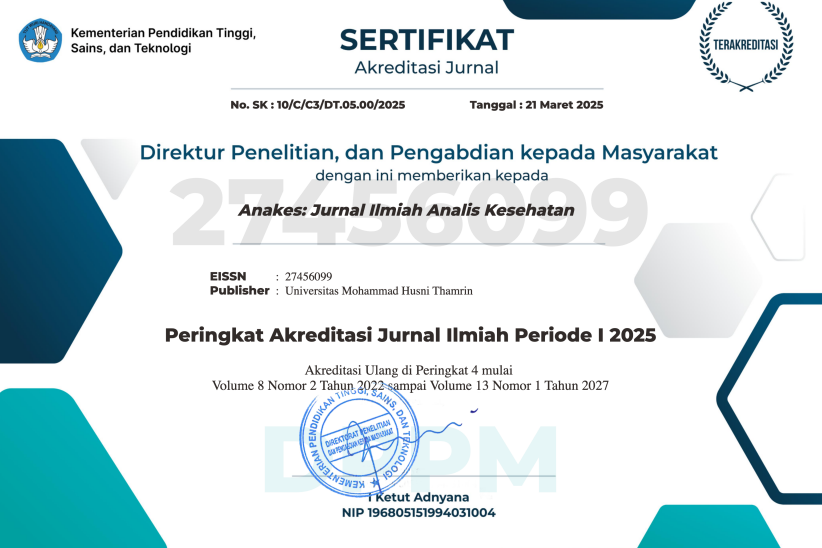Optimasi Metode Pemeriksaan HbA1c Secara Elektrokimia Berbasis Screen Printed Carbon Electrode
DOI:
https://doi.org/10.37012/anakes.v10i2.2314Abstract
The quantification of HbA1c as an analyte used to monitor the success of diabetes treatment is generally examined in a laboratory with sophisticated technological equipment and professional staff. Point of care testing (POCT) is generally designed for practical examination at the patient's side. POCT HbA1c uses a screen-printed electrode (SPCE) reagent strip labeled with aptamer molecular imprinted polymer (MIP), boronate, or anti-HbA1c antibody and then quantified electrochemically. The linearity of the measurement works at a normal detection concentration of 5.5-8.5% but has not been tested at high critical concentrations. The purpose of this study was to optimize the electrochemical quantification method of HbA1c. The research procedure, SPCE was first activated with 0.1 M NaOH by cyclic voltammetry. Aptamer labeling (Fe3O4@MIPHbA1c) was carried out using the chronoamperometric technique and quantification was determined by the differential pulse voltammetry (DPV) technique. HbA1c stock of 6% and 10% in PBS pH 7.4 was used as normal and pathological concentration solution in accuracy and precision study (target quality CV <3%). The result, the average normal concentration of HbA1c was 5.9% ± 0.1%, CV=1.69% and pathological concentration was 10.4% ± 0.21%, CV=1.92%. The linearity test result of measurement ranged from 2%-15% R2=0.987. In conclusion, MIPHbA1c-activated SPCE showed optimal condition in HbA1c measurement in the normal and pathological range.
Keywords: SPCE, HbA1c POCT, HbA1c Magnetit, HbA1c Aptamer
Downloads
Published
How to Cite
Issue
Section
Citation Check
License
Copyright (c) 2024 Ayi Furqon, Prina Puspa Kania

This work is licensed under a Creative Commons Attribution 4.0 International License.
Anakes :Â Jurnal Ilmiah Analis Kesehatan allows readers to read, download, copy, distribute, print, search, or link to the full texts of its articles and allow readers to use them for any other lawful purpose. The journal allows the author(s) to hold the copyright without restrictions. Finally, the journal allows the author(s) to retain publishing rights without restrictions Authors are allowed to archive their submitted article in an open access repository Authors are allowed to archive the final published article in an open access repository with an acknowledgment of its initial publication in this journal.

Lisensi Creative Commons Atribusi 4.0 Internasional.











